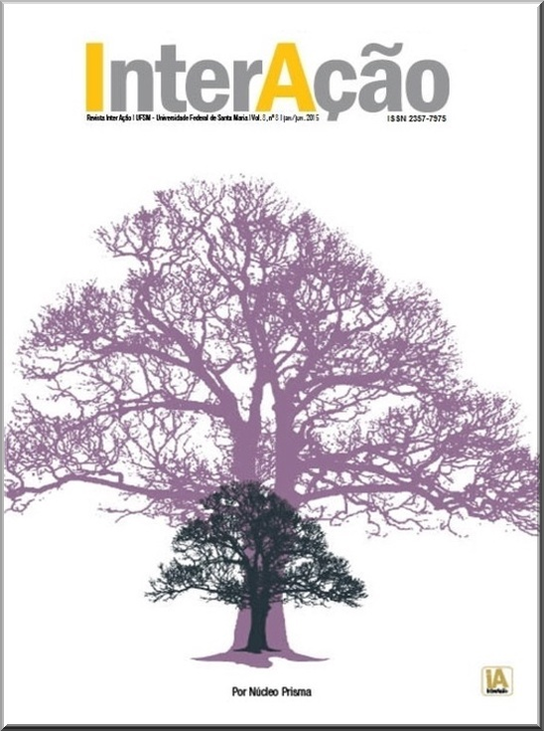The Middle East amid Global Multipolarity: The Emergence of New Actors in the Region involving the BRICS Countries
DOI:
https://doi.org/10.5902/2357797516837Palabras clave:
BRICS, MENA, Arab Spring, multilateralism.Resumen
Political instability and riots happening in many Arab countries coincided with the expansion of BRICS. These five countries are among the most powerful countries in the international arena and their opinions are of paramount importance since all members of the Security Council of the United Nations, China and Russia are permanent members and Brazil, India and Africa South are not permanent members, but are seeking permanent representation for greater influence in the world. The ongoing reorganization of the political landscape in the Middle East and North Africa opened new space for the BRICS to the international prestige on responding to this turmoil. The big changes are now being caused not by victories on the battlefield or new geopolitical alignments, but by a single factor in our modern world - rapid economic growth, which will profoundly impact the International Relations and International Security.
Descargas
Citas
ANBA. Marfrig Planeja Fábrica No Oriente Médio. Brasil. 2014. Disponível em: www.anba.com.br/noticia_impressao.kmf?cod=21863830&pdf=1. Acesso em: 20 de junho de 2014.
BAKHTIN, V. et al. The Mediterranean Region in a Multipolar World Evolving Relations with Russia, China, India and Brazil. Washington: The German Marshall Fund of the United States, 2013. pp.1-43.
BURLINOVA, N. “War in Afghanistan (2001-2011): Overview and Perspectives” (in Russian). In: Perspectives, July 1. 2011. Disponível em: http://www.perspektivy.info/oykumena/amerika/vojna_v_afganistane_2001__2011_gg__obzor_i_perspektivy_2011-07-01.htm. Acesso em: 1 de junho de 2014.
CHELLANEY, B. “BRICS and the New Arab Revolutions”. In: AMEC. 2011. Disponível em: http://www.amec.org.za/articles-presentations/middle-east-general/125-brics-and-the-new-arab-revolutions. Acesso em: 15 de maio de 2014
DIRECTOR GENERAL OF FOREIGN TRADE OF INDIA STATISTICS. Sítio web. 2014. Disponível em: http://commerce.nic.in/eidb/default.asp. Acesso em: 5 de junho de 2014.
GUSAROV Vladilen I. Post-Soviet Russia’s Economic Ties with the Arab World (in Russian). Moscow: Institute for Oriental Studies of the Russian Academy of Sciences/Institute for Israeli and Middle Eastern Studies, 1997, pp. 34-35. Disponível em: http://www.iimes.ru/rus/book/1997/sbor/r97sbor_1.zip. Acesso em: 2 de junho de 2014.
HENDERSON, S. “Natural Gas in the Palestinian Authority”. In: GMF-USA. 2014. Disponível em: http://www.gmfus.org/archives/natural-gas-in-the-palestinian-authority/. Acesso em: 3 de junho de 2014.
INYUTIN, V. “Russia Abandons Its Citizens Amid Battle Action in Syria” (in Russian). In: NR2 New Russia. August 2. 2012. Disponível em: http://www.nr2.ru/moskow/397667.html. Acesso: 2 de junho de 2014.
JIECHI, Y. “Boosting Arab-China strategic cooperation”. In: Arab News. 2012. Available in: <http://www.arabnews.com/boosting-arab-china-strategic-cooperation>. Accessed: 3 jun. De 2014.
KATZ, M. “Moscow and the Middle East: Repeat Performance?” In: Russia in Global Affairs, v. 10, n. 4, July-September, 2012. Disponível em: http://eng.globalaffairs.ru/number/Moscow-and the-Middle-East-Repeat-Performance-15690. Acesso em: 5 de junho de 2014.
KALOUT, Hussein, A. “Oriente Médio: Itamaraty sem estratégia”. In: Folha de São Paulo. July 23. 2012. Disponível em: http://www1.folha.uol.com.br/fsp/opiniao/56029-oriente-medio-itamaraty-semestrategia.shtml. Acesso em: 11 de junho de 2014.
KHORRAMI, N. “Russia's Middle East ambitions”. In: Al Jazeera. 2011. Disponível em: http://www.aljazeera.com/indepth/opinion/2011/08/2011828943035319.html. Acesso em: 10 de junho de 2014.
LAIDI, Z. The BRICS against the West?. CERI Strategy Papers, 2011. Disponível em: http://www.sciencespo.fr/ceri/sites/sciencespo.fr.ceri/files/n11_112011.pdf. Acesso em: 20 de maio de 2014.
MESSARI, Nizar. “O Brasil e o mundo árabe”. In: OLIVEIRA, Henrique Altemani; LESSA, Antônio Carlos (orgs.). Relações internacionais do Brasil: temas e agendas. São Paulo: Saraiva, 2006. pp. 299-320.
MINISTRY OF OVERSEAS INDIAN AFFAIRS. Annual Report 2011-12. 2012. p. 36. Disponível em: http://moia.gov.in/writereaddata/pdf/annual_report_2011-2012.pdf. Acesso em: 7 de junho de 2014.
PECORARO, E. “China’s strategy in North Africa and future economic challenges for the Mediterranean region”. In: EUGOV Working Paper, n. 25, November, 2010. Bellaterra (Barcelona): Institut Universitari d'Estudis Europeus.
PROZOROVA, Galina K. Russia and the Countries of the Near East, Middle East and North Africa. Problems and Prospects of Cooperation. A collection of articles (in Russian). Moscow: East- West, 2009, p. 54.
SANTOS, A. “Exports to the Arabs grow by 20%” In: ANBA. Brazil-Arab News Agency. January 31. 2012. Disponível em: http://www2.anba.com.br/noticia_corrente.kmf?cod=13028777. Acesso em: 10 de junho de 2014.
SMITH, M. Russia & The Middle East. Conflict Studies Research Centre, 2002.
XIAODONG, C. “China’s Relations with the Arab Countries”. In: Aljazeera. May 30. 2012. Disponível em: http://news.bandao.cn/news_html/201205/20120531/news_20120531_1917839.shtml. Acesso em: 20 de junho de 2014.







